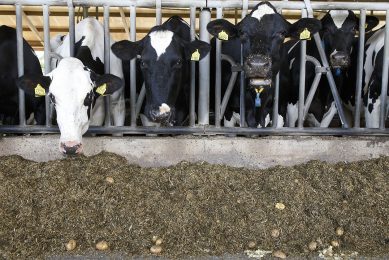FDA updates vomitoxin advisory levels
The Food and Drug Administration (FDA) on July 7 updated its new industry guidance document for deoxynivalenol (DON), commonly referred to as vomitoxin, to specifically include gluten feed and gluten meal among the grain co-products subject to a 30 part per million p.p.m. advisory level if destined for ruminating beef and dairy cattle older than four months.
Previously, only distillers grains and brewers grains were identified as being subject to the newly established 30 p.p.m. advisory level. As originally reported in the July 1 edition of the NGFA Newsletter, FDA officials had told the NGFA previously that they intended to make a further revision to the DON advisory levels after inadvertently omitting gluten feeds and gluten meals when first issuing the new guidance document on June 29.
Significantly, the newly updated FDA guidance document does not specifically reference gluten feed or meal derived from corn, thereby providing flexibility for gluten derived from other grain sources such as wheat, rye and barley. FDA’s advisory levels recommend that the total ration of ruminating beef and feedlot cattle over four months not exceed 10 p.p.m of DON, while the total ration of ruminating dairy cattle older than four months should not exceed 5 p.p.m. DON, both on an 88 percent dry matter basis.
FDA increased its advisory levels for grain and grain co-products destined for beef cattle, and established for the first time a separate advisory level for dairy cattle, in response to a joint letter submitted May 14 by the NGFA and American Feed Industry Association (AFIA). The two organizations had requested that FDA reexamine and update its DON advisory levels, which were last amended in September 1993, to reflect more recent scientific studies that demonstrated that higher levels of DON could be fed safely to certain species while still fully protecting human and animal health.
In a response letter dated July 1 to the NGFA, FDA stated that an increase in the DON advisory levels for beef and dairy cattle was justified following its review of scientific studies referenced in the NGFA-AFIA letter, as well as the agency’s own independent scientific literature review of what it called "a number of well-designed studies of DON fed to cattle" that have been published since the agency last revised its DON advisory levels 17 years ago. The FDA letter to the NGFA noted that residues of DON and its metabolite (DOM) are not found in meat or milk at levels that would pose a human health concern. Further, FDA stated that the rumen microflora in beef and dairy cattle "are quite proficient in degrading DON."
In addition, "[f]uture research may provide data to support the safety of higher (DON) levels in the total ration for ruminants," wrote Dr. Terry Proescholdt, leader of the Feed Safety Team at the FDA Center for Veterinary Medicine’s Division of Animal Feeds.
Click here to access the newly updated FDA advisory levels for DON (caution, the PDF version of the FDA guidance has not been updated yet).











